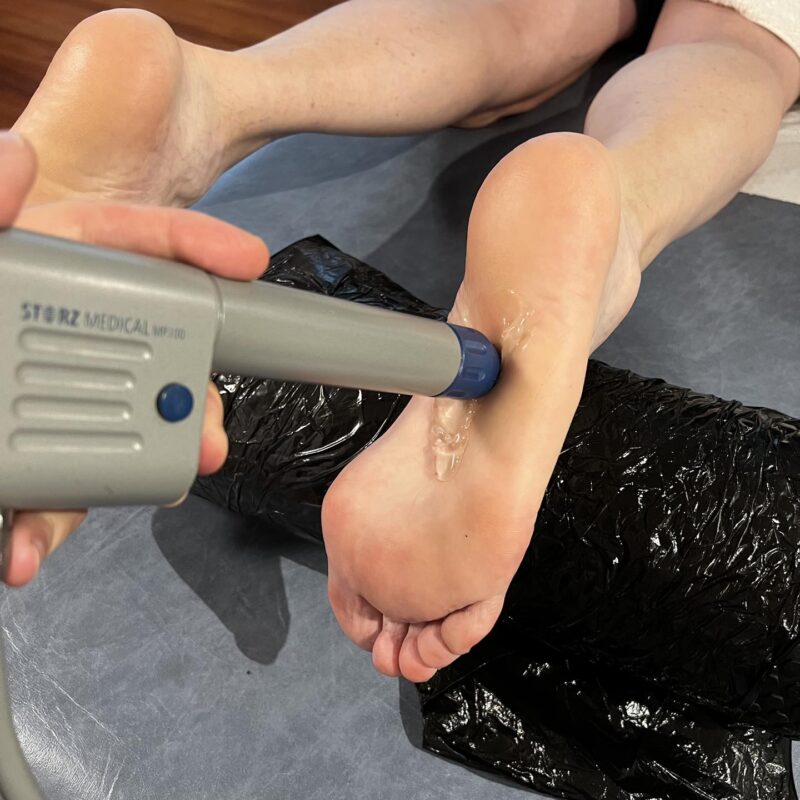Exploring the World of Herbal Glycerites for Children’s Health
Understanding the Essence of Herbal Glycerites

Making Herbal Glycerites for Kids: Herbal glycerites represent a charming blend of nature’s bounty and holistic wellness, specifically designed for children. These delightful liquid extracts are crafted by infusing an array of herbs in glycerin, a naturally sweet and palatable substance derived from plant oils. Unlike conventional alcohol-based tinctures, which can be overwhelming and unsuitable for young ones, glycerites provide a gentle, safe alternative. The sweet flavour of glycerites effectively masks the often bitter essence of various herbs, making them more appealing to children, thus encouraging their acceptance and regular consumption. The art of preparing herbal glycerites enables a host of beneficial herbs to be encapsulated in a form that is both enjoyable and safe for children, promoting their overall health and wellbeing.
The process of making herbal glycerites for kids is not only straightforward but also yields powerful health benefits. By thoughtfully selecting the right herbs and preparing them with care, parents can create powerful remedies that bolster their children’s health in numerous ways. Whether addressing minor ailments or simply aiming to enhance overall wellness, herbal glycerites can serve as an exceptional addition to a child’s health regimen, providing a natural means of support that parents can trust.
Exploring the Health Benefits of Glycerites for Children
Herbal glycerites offer numerous advantages, specifically for children, primarily due to their non-alcoholic nature. Many traditional herbal extracts are alcohol-based, rendering them unsuitable and potentially harmful for younger populations. Glycerin, in contrast, is safe, easily digestible, and serves as an ideal medium for extracting the beneficial properties of various herbs. The naturally sweet taste of glycerites not only enhances palatability but also encourages children to accept their herbal remedies without fuss or resistance, promoting adherence to health practices.
In terms of health benefits, herbal glycerites can help alleviate various common health issues that affect children. For example, certain herbal glycerites are well-known for their calming properties, making them perfect for children who experience anxiety or struggle with sleep. Others, such as those derived from elderberry, provide crucial immune support, especially during the winter months when colds and flu are most prevalent. Additionally, glycerites can aid in digestion, a considerable advantage for children prone to tummy troubles or discomfort following meals, thus addressing multiple aspects of their health holistically.
Overall, the practice of making herbal glycerites for kids empowers parents to adopt a proactive approach to their children’s health, providing natural solutions that are both effective and enjoyable. By incorporating these remedies into their daily routine, parents can help foster a sense of wellbeing and resilience in their children.
Ensuring Safety When Using Herbal Glycerites for Kids
Before embarking on the rewarding journey of making herbal glycerites for kids, it is crucial to prioritise safety. Always consult a qualified healthcare provider to ensure that the chosen herbs are suitable for your child’s age, health status, and specific needs. Certain herbs may be contraindicated for younger children or may interact with other medications, making professional guidance essential for ensuring a safe and positive experience.
Furthermore, the child’s age significantly influences the selection of herbs and the dosages administered. Some herbs may be appropriate for older children but not for toddlers. As a prudent approach, it is advisable to begin with small doses and closely monitor your child for any adverse reactions. If no issues arise, you can gradually increase the dosage to find the right balance for your child’s needs.
It is also vital to source high-quality herbs, as some may be exposed to pesticides or other harmful chemicals. Choosing organic herbs or even cultivating your own can provide peace of mind regarding safety and quality. By taking these precautions, parents can confidently explore the world of herbal glycerites, ensuring that these remedies make a positive contribution to their child’s health and wellbeing.
Selecting the Best Herbs for Children’s Glycerites

Identifying Common Herbs Suitable for Children
Selecting the appropriate herbs is a crucial step in creating herbal glycerites for children. Certain herbs are particularly well-suited for children due to their gentle nature and beneficial properties. Chamomile, for instance, is cherished for its calming effects, making it a go-to choice for parents aiming to soothe anxious or restless children. Not only does this herb aid relaxation, but it is also effective in addressing minor digestive issues, rendering it a versatile option for glycerite preparation.
Another excellent choice is lavender, renowned for its ability to induce relaxation and enhance sleep quality. A lavender glycerite could serve as a bedtime companion, helping children unwind after a hectic day. Similarly, elderberry is celebrated for its immune-boosting properties, which are particularly beneficial during the cold and flu season. By incorporating these herbs into glycerites, parents can offer their children natural remedies for common ailments without concern for adverse side effects, thereby fostering a healthier lifestyle for their little ones.
Other beneficial herbs for children include peppermint, known for its digestive support, and lemon balm, which is recognised for its calming effects. When selecting herbs, it is essential to consider your child’s specific needs and preferences to ensure they will enjoy and benefit from the glycerites you prepare, enhancing their overall acceptance of these natural remedies.
Where to Source Quality Herbs in the UK
When it comes to sourcing herbs, the United Kingdom offers an abundance of options for those interested in making herbal glycerites for kids. Numerous health food shops, herbalists, and online retailers provide high-quality, organic herbs for purchase. Notable suppliers, such as Neal’s Yard Remedies and The Herb Garden, offer a diverse selection of dried herbs suitable for glycerite preparation, ensuring that parents have access to the highest-quality ingredients.
Alternatively, cultivating your herbs can be a rewarding endeavour, ensuring freshness and quality. Many herbs, such as chamomile and mint, are relatively easy to grow in a garden or even in pots on a balcony, providing a hands-on approach to herbal health. This not only guarantees the purity of the herbs but also engages children in the gardening process, instilling in them a sense of connection with plants and the natural world.
For those who cannot grow their own, local farmers’ markets often showcase herbal products and dried herbs, providing an excellent opportunity to connect with local growers and gain insights into herbal usage and preparation. Regardless of the sourcing method, it is crucial to ensure that the herbs come from reputable sources to maintain the integrity and safety of your glycerite preparations.
Understanding Herb Safety and Dosage for Children

Grasping the concepts of herb safety and appropriate dosing is crucial when preparing herbal glycerites for children. Each herb has its own set of guidelines regarding usage, particularly regarding children. Comprehensive research is essential before introducing any new herb into your child’s regimen. Resources such as the National Centre for Complementary and Integrative Health provide valuable information on the safety and efficacy of various herbs, helping parents make informed decisions.
As a general guideline, it is wise to start with very small doses, particularly for new herbs. A common practice is to use a quarter of the adult dosage, adjusting it according to age and size. For younger children, it is often better to err on the side of caution and consult with a healthcare provider for personalised advice on appropriate dosing.
Monitoring your child’s reaction to the glycerite is critical; if any adverse effects occur, discontinue use immediately. Maintaining a journal of dosages and effects can help identify the most beneficial remedies for your child, providing a thoughtful approach to exploring herbal glycerites safely and effectively.
Creative Preparation of Herbal Remedies for Children
Crafting herbal remedies for children requires both care and creativity. The process of making herbal glycerites for kids involves more than just selecting the right herbs; it is about ensuring that the preparations are enjoyable and safe for little ones. Begin by preparing herbal teas, which represent an excellent introduction for children to the flavours of various herbs. Steep the herbs in hot water, allow to cool, and strain. Sweetening with honey can enhance the flavour, creating a delightful drink that can aid digestion or encourage relaxation.
Tinctures can also act as a foundation for glycerites. However, as alcohol is unsuitable for children, glycerin becomes the perfect substitute. Begin with a gentle extraction method such as cold infusion, which allows the herbs to steep in glycerin over several weeks. This method preserves the delicate properties of the herbs while effectively imparting their benefits into the glycerin, resulting in a potent and tasty remedy.
When preparing syrups, consider incorporating fruit juices or purees to enhance flavour, making the final product more enticing for children. This approach not only improves the palatability of the glycerite but also adds nutritional value. The key is to ensure that the preparations are both effective and enjoyable, fostering regular use while supporting your child’s health and wellbeing.
Creating the Glycerin Base for Herbal Glycerites
Choosing the Right Types of Glycerin
When embarking on the exciting journey of making herbal glycerites for kids, selecting the appropriate type of glycerin is paramount. Food-grade vegetable glycerin is the ideal choice, as it is safe for consumption and widely available in various health food stores across the UK. This clear, odourless liquid, derived from plant oils, serves as a natural option for infusions that is both effective and safe for children.
When sourcing glycerin, ensure it is labelled as food-grade, as industrial glycerin may contain additives unsuitable for consumption. Reputable suppliers, including online health retailers and local herbal shops, typically provide high-quality glycerin that meets safety standards.
The benefits of using vegetable glycerin extend beyond mere safety; its natural sweetness enhances the final product, making herbal glycerites more appealing to children. This characteristic is particularly valuable, as many herbal extracts possess strong, sometimes off-putting flavours. Utilisingg vegetable glycerin, you can create enjoyable herbal glycerites that your children will happily accept, ensuring better adherence to their health regimens.
Determining Mixing Ratios for Effective Glycerites
The mixing ratios significantly impact the potency of your herbal glycerin, not just the glycerin itself. A common standard is one part herb to three parts glycerin; however, this ratio can be adjusted based on the specific strength of the herb and the desired intensity of the final product. For instance, more potent herbs like elderberry may require adjustments to this ratio to achieve the most effective glycerite.
Accurate measuring is essential in this process. Using a kitchen scale for precise herb measurements ensures consistency across batches, leading to more reliable outcomes. Once the herbs are mixed with glycerin, the infusion process commences, during which the active compounds of the herbs gradually leach into the glycerin, creating a potent remedy.
During this period, consider the duration of the infusion. For quicker extraction, a gentle heat method can be employed, but it is crucial not to exceed 60°C to avoid compromising the beneficial compounds in the herbs. Experimenting with different ratios and infusion times can help you discover the optimal combination tailored to your and your child’s needs, enhancing the efficacy of your glycerite preparations.
Ensuring Sterilisation and Proper Storage of Glycerites
To maintain the longevity and efficacy of your glycerites, meticulous attention to sterilisation and storage is essential. Begin by thoroughly cleaning all equipment used in the preparation process, including jars, bottles, and utensils, which should be sterilised with boiling water or an alcohol solution. Sanitising your tools prevents contamination and helps preserve the integrity of the herbal glycerites.
Once the glycerites are prepared, store them in dark glass bottles. Exposure to light can degrade the quality of herbal extracts, so using dark glass helps protect the glycerites from harmful light exposure. Ensure the bottles are tightly sealed to prevent air from degrading the contents, thus maintaining their potency.
Storing your herbal glycerites in a cool, dark place is crucial for preserving their effectiveness, extending their shelf life to approximately one to two years when properly stored. Keeping a labelled inventory with the date of preparation will aid in tracking the freshness of your glycerites, ensuring that you consistently provide your children with the best quality remedies available.
Heating the Glycerin for Optimal Extraction
Heating the glycerin is a pivotal step in the extraction process of making herbal glycerites for kids. Gentle heating facilitates the effective extraction of the active compounds found in the herbs. To accomplish this, place the glycerin in a double boiler, ensuring that the heat remains low and consistent. The objective is to warm the glycerin without exceeding 60°C, as higher temperatures could compromise the therapeutic properties of the herbs.
The heating process can take anywhere from 30 minutes to two hours, depending on the herbs used and the desired potency of the glycerite. It is vital to monitor the temperature closely to prevent overheating, as excessive heat can cause the evaporation of volatile compounds essential for the glycerite’s efficacy.
Once the glycerin reaches the appropriate temperature, add your chopped herbs and allow them to steep. This gentle infusion process will extract the beneficial properties of the herbs, resulting in a glycerite that is both effective and palatable for children. Always ensure that you allow the mixture to cool before transferring it to storage bottles, thus preserving the integrity of the extracted herbal goodness.
Crafting the Glycerite: From Preparation to Bottling
Chopping and Measuring Herbs for Glycerites
The meticulous process of chopping and measuring herbs is foundational to making herbal glycerites for kids. Proper preparation of herbs enhances both the extraction process and the effectiveness of the final product. Begin by thoroughly washing the herbs to remove any dirt or potential contaminants. Once clean, finely chop the herbs, as smaller pieces allow for a greater surface area, facilitating better extraction of beneficial compounds into the glycerin.
For accurate dosing, it is imperative to measure the herbs precisely. A kitchen scale is an invaluable tool for this task, ensuring consistency across batches. When measuring dried herbs, a common guideline is approximately one ounce of dried herb to three ounces of glycerin. Adjustments may be necessary based on the specific herb’s potency and your desired glycerite strength, allowing for a tailored approach to herbal preparations.
The precision in chopping and measuring directly impacts the quality of the glycerite. Ensuring uniformity in herb size promotes even extraction, leading to a more balanced and effective final product. Taking the time to prepare your herbs properly sets the stage for a successful glycerite, one that is ready to support your child’s health and wellbeing. Different Infusion Methods for Glycerites
Infusion methods play a crucial role in creating effective glycerites. The two primary techniques for making herbal glycerites for kids are maceration and gentle heating. The maceration method involves allowing the herbs to steep in glycerin for an extended period, typically several weeks. This slow infusion process is ideal for delicate herbs, as it preserves their volatile compounds and maximises their benefits.
To execute the maceration method, combine the chopped herbs with glycerin in a sealed jar, ensuring that the herbs are completely submerged. Store the jar in a cool, dark place, gently shaking it every few days to encourage the infusion process. After the infusion period, strain the mixture through cheesecloth or a fine-mesh strainer to separate the liquid from the solid herbs, resulting in a concentrated glycerite.
Alternatively, for those seeking a quicker extraction, a gentle heating method can be employed. In this technique, chopped herbs are added to warm glycerin and allowed to steep over low heat for several hours. While this method is faster, it is essential to maintain low temperatures to prevent degrading the herbs’ beneficial compounds, ensuring that the final product retains its potency.
Both methods yield effective glycerites, providing flexibility based on time and preference. Experimenting with these techniques can help you discover the best infusion method that suits your child’s needs and specific health goals.
Straining and Bottling Your Herbal Glycerite
Once the infusion process is complete, it’s time to proceed with straining and bottling your herbal glycerite. This step is crucial to ensure the final product is free from any plant material, providing a smooth and pleasant experience for children. Start by placing a clean cheesecloth or fine mesh strainer over a bowl or measuring jug. Carefully pour the infused glycerin through the strainer to separate the liquid from the herbs, allowing the glycerin to pass through while retaining the solid plant material.
For added clarity, you may wish to strain the glycerite a second time through a coffee filter or a finer mesh. This extra step is particularly helpful if you notice any residual sediment in the glycerin. Once the glycerite has been thoroughly strained, transfer it into sterilised dark glass bottles, leaving some space at the top to allow for expansion or pressure release if necessary, ensuring the integrity of the product.
Label each bottle clearly with the contents and the date of preparation. This not only aids the organisation but also helps to track the freshness of your glycerite. Properly stored, your herbal glycerites will maintain their potency for up to two years, ready to support your child’s health whenever needed, thus ensuring a reliable and effective natural remedy.
Ensuring Proper Storage and Shelf Life of Glycerites
Proper storage of your herbal glycerites is essential for preserving their effectiveness and extending their shelf life. Once bottled, ensure that the glycerites are stored in a cool, dark place away from direct sunlight and heat sources. A cupboard or pantry is an excellent choice for storing your herbal preparations, as it protects them from light exposure, which can degrade their quality over time and ultimately affect their efficacy.
The shelf life of herbal glycerites varies depending on the herbs used and the storage conditions. Generally, well-prepared glycerites can last between one and two years when stored properly. Regularly check the bottles for any signs of spoilage, such as changes in colour, smell, or consistency. If you notice any irregularities, it’s best to discard the glycerite to prevent giving your child any potentially harmful substance, ensuring their safety and wellbeing. Maintaining an organised inventory of your glycerites, including preparation dates and herb types, can help you manage their usage effectively. This approach not only ensures that you use the oldest products first but also allows you to tailor your herbal remedies to your child’s changing needs. By adhering to these storage guidelines, you can guarantee that your herbal glycerites remain a reliable resource for your family’s health.
Exciting and Popular Glycerite Recipes for Kids
Creating a Calming Chamomile Glycerite
One of the standout recipes for making herbal glycerites for kids is the calming chamomile glycerite. Chamomile is renowned for its soothing properties, making it an excellent choice for children who struggle with anxiety or insomnia. The process of creating this glycerite is both simple and rewarding. Begin by gathering high-quality dried chamomile flowers, ensuring that they are of premium quality to maximise benefits.
To prepare, measure one part dried chamomile to three parts vegetable glycerin. Place the chamomile flowers in a clean glass jar and pour the glycerin over them, ensuring the herbs are fully submerged. Seal the jar tightly and store it in a cool, dark place for approximately four to six weeks. Shake the jar gently every few days to encourage the infusion process, allowing the beneficial properties of the chamomile to infuse into the glycerin.
After the infusion period, strain the mixture through a cheesecloth or fine mesh strainer, discarding the plant material. Transfer the strained glycerite into a dark glass bottle and label it with the date of preparation. This calming chamomile glycerite can be administered to children before bedtime or during times of stress, promoting relaxation and restful sleep, thus supporting their emotional well-being.
Formulating an Immune-Boosting Elderberry Glycerite
Elderberry has gained immense popularity due to its immune-boosting properties, especially during the cold and flu season. Making herbal glycerites for kids with elderberries is a fantastic way to provide natural support for your child’s immune system. Begin by sourcing high-quality dried elderberries from a reputable supplier or health food store to ensure maximum potency and effectiveness.
For this glycerite, use a ratio of one part elderberries to three parts glycerin. Combine the elderberries and glycerin in a clean glass jar, ensuring that the elderberries are fully submerged. Seal the jar and store it in a cool, dark place, allowing the mixture to steep for about four to six weeks. Remember to gently shake the jar every few days to aid in the infusion process, ensuring that the beneficial properties of the elderberries are effectively extracted.
Once the infusion period is complete, strain the glycerite, discarding the elderberries. Bottling the glycerite in dark glass ensures its longevity and potency. This immune-boosting elderberry glycerite can be used regularly during the cold months, potentially helping to prevent illness and support overall health in children, reinforcing their natural defences.
Preparing a Digestive Peppermint Glycerite
For children who experience digestive issues, a peppermint glycerite can serve as a soothing remedy. Peppermint is well-regarded for its ability to ease digestive discomfort and can be particularly helpful for children after meals. To create this glycerite, gather high-quality dried peppermint leaves, ensuring they are clean and free from contaminants, to maximise effectiveness.
Begin with a ratio of one part dried peppermint to three parts vegetable glycerin. Place the peppermint leaves in a clean jar and pour the glycerin over them. Seal the jar tightly and store it in a cool, dark place, allowing the mixture to steep for approximately 4 to 6 weeks. Shake the jar every few days to promote extraction, ensuring the beneficial properties of the peppermint are thoroughly infused into the glycerin.
After the infusion period, strain the glycerite through a cheesecloth or fine mesh strainer, discarding the plant material. Transfer the final product into a dark glass bottle, labelling it with the preparation date. This digestive peppermint glycerite can be administered to children experiencing tummy troubles, providing a natural solution for discomfort and promoting digestive health.
Guidelines for Administering Glycerites to Children
Establishing Safe Dosage Guidelines
Administering your homemade herbal glycerites to children requires careful consideration of dosage guidelines to ensure safety and efficacy. The key principle is to start with small doses and gradually increase them, tailoring the amount to your child’s age, weight, and specific health needs to ensure optimal results.
For general guidance, start with one-quarter of the adult dosage. This can typically range between 1 and 3 teaspoons for older children, while younger children may require even less. Always consult a healthcare provider for personalised dosage recommendations, particularly when introducing a new herb into your child’s regimen to ensure safety and effectiveness.
Monitoring your child’s response to the glycerite is essential. If they exhibit any adverse reactions, such as allergies or digestive discomfort, discontinue use immediately. Keeping a record of dosages and any effects can help you fine-tune the administration of herbal glycerites, ensuring that your child receives the most suitable remedy for their needs and promoting a positive experience with natural health solutions.
Ultimately, the goal of making herbal glycerites for kids is to empower parents to provide natural support for their children’s health. By understanding dosage guidelines and being vigilant about potential reactions, you can create a safe and effective herbal remedy experience for your child, thereby enhancing their overall wellbeing.
Frequently Asked Questions About Herbal Glycerites
What exactly are herbal glycerites?
Herbal glycerites are liquid extracts made by infusing various herbs in vegetable glycerin. They are non-alcoholic, sweet-tasting, and particularly suitable for children, offering an effective means to deliver the benefits of herbal remedies.
Are herbal glycerites safe for children?
Yes, herbal glycerites are safe for children when prepared correctly. However, it is essential to consult a healthcare provider before introducing new herbs and to ensure that the chosen herbs are appropriate for your child’s age and health status.
What is the shelf life of herbal glycerites?
When stored properly in a cool, dark place in dark glass bottles, herbal glycerites can last between one and two years. Regular checks for any signs of spoilage are advisable to ensure quality.
Can I use fresh herbs for glycerites?
Fresh herbs can be used in glycerites, but they contain a higher water content, which could potentially affect their shelf life. If using fresh herbs, consider using a shorter infusion time and storing the glycerite in the refrigerator to maintain its quality.
What herbs are best suited for children?
Commonly recommended herbs for children include chamomile, lavender, elderberry, and peppermint. These herbs are known for their calming, immune-boosting, and digestive support properties, making them ideal choices for children’s health.
How do I measure the herbs for glycerin effectively? Utilising a kitchen scale for accurate measurements is recommended. A common ratio is one part herb to three parts glycerin, but adjustments may be necessary based on the herb’s potency and desired outcomes.
Can I use glycerites as a substitute for prescribed medication?
While herbal glycerites can offer natural support, they should not be used as a substitute for prescribed medications. Always consult a healthcare provider regarding any health concerns or treatment plans to ensure comprehensive and safe care.
How can I introduce glycerites to my child?
Begin with small doses and consider mixing the glycerite into water or juice to enhance palatability. Gradually increase the dose while closely monitoring for any adverse reactions to ensure a smooth introduction to herbal remedies.
Is it possible to overdose on herbal glycerites?
While herbal glycerites are generally safe, overdosing can lead to adverse reactions. Always adhere to recommended dosages and consult a healthcare provider for guidance on safe usage.
Can I combine different herbs in one glycerite preparation?
Yes, combining herbs is feasible, but ensure that the herbs selected complement each other and are safe to use together. Research each herb’s properties and dosage recommendations before mixing to ensure safety and effectiveness in your preparations.


























3 Comments
It’s interesting to see the resurgence of herbal glycerites in children’s health, especially considering the ongoing debate about herbal remedies versus conventional medicine. While I appreciate the effort to provide a gentler alternative to alcohol-based tinctures, it’s essential to approach herbal remedies with caution, particularly for children. Many herbs can interact with medications or have contraindications that parents might overlook.
I love the idea of using herbal glycerites for kids! It reminds me of how my grandmother used to prepare herbal remedies, always focusing on what was gentle and nurturing. The sweetness of glycerin really is a game-changer—it makes herbal remedies so much more friendly for little ones. I wonder, though, which herbs are best for various childhood ailments? Have you experimented with any specific ones that stand out for effectiveness or taste? It’s fascinating to see the resurgence of natural remedies in a world so dominated by quick-fix pharmaceuticals. I’m all for blending traditional wisdom with modern wellness for our kiddos!
What a wonderfully intriguing exploration of herbal glycerites for children’s health! The thoughtful approach you took to highlight their benefits truly resonates with me. As a parent who has always sought natural remedies and ways to promote wellness in my family, I find the concept of glycerites to be not only appealing but also a practical solution for addressing various health concerns in children without the overwhelming taste of many traditional remedies.